What Is Calabrian Chili and How Do You Use It?
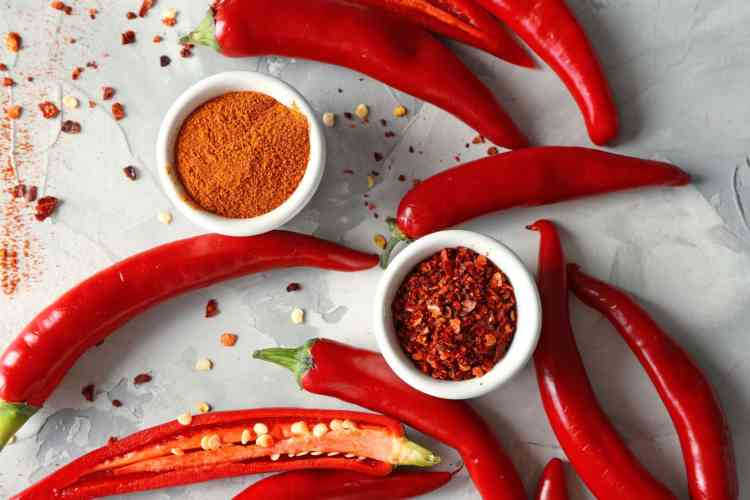
Are you looking to experiment with new and exciting ingredients in your home kitchen? Perhaps the shelves in your pantry are woefully bare and you could use some inspiraiton to help fill them with some exotic new condiments, oils and pastes? Well, we have some ideas.
Calabrian chilis are a staple in Southern Italian cuisine, known for their unique combination of heat and flavor. This spicy pepper has plenty of uses beyond traditional Italian dishes. Whether you're a fan of all things spicy or still learning to experiment with different levels of heat in your cooking, our guide to the Calabrian chili will help you discover the best ways to use and enjoy this Italian delicacy.
Jump to Section
- What Are Calabrian Chilis?
- What Is Calabrian Chili Paste?
- How To Cook With Calabrian Chiles
- What Are Some Good Calabrian Chili Substitutes?
- Where To Buy Calabrian Chilis
What Are Calabrian Chilis?
Calabrian chili peppers are small, round peppers grown in the Calabria region of Italy. These peppers were likely introduced to the area by Spanish explorers, and the climate of Southern Italy (think of the “toe” of Italy’s famous boot shape) created perfect conditions for them to thrive.
Scientifically, these peppers are a variety of Capsicum Annuum, a species that includes more familiar peppers like the serrano and the jalapeño. Because they are significantly hotter, Calabrian chilis are known as the Italian spicy pepper and feature heavily in many dishes that call for a little bit of extra heat and flavor.
These chiles are incredibly versatile and are staples not only in Southern Italian cuisine but also in other dishes across Italy. In fact, they are so popular in their native region that there is an annual festival to celebrate them.
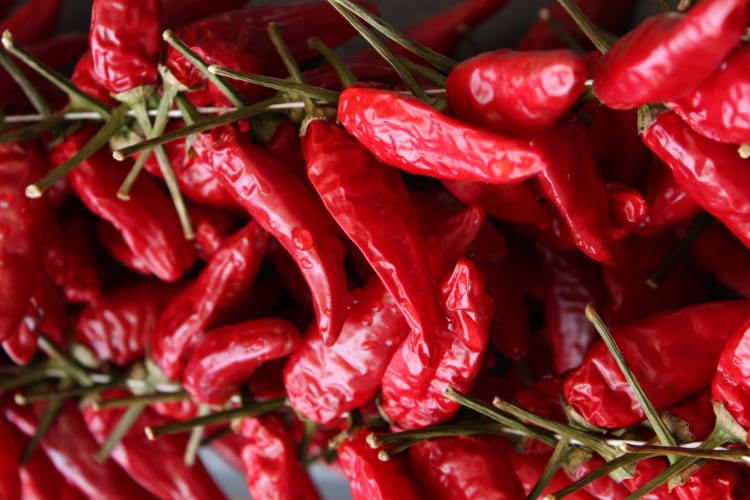
Types of Calabrian Chili
There are several varieties of these peppers worth knowing about if you plan on adding them to your next dish. While they all look somewhat similar, their different shapes and flavors make them unique.
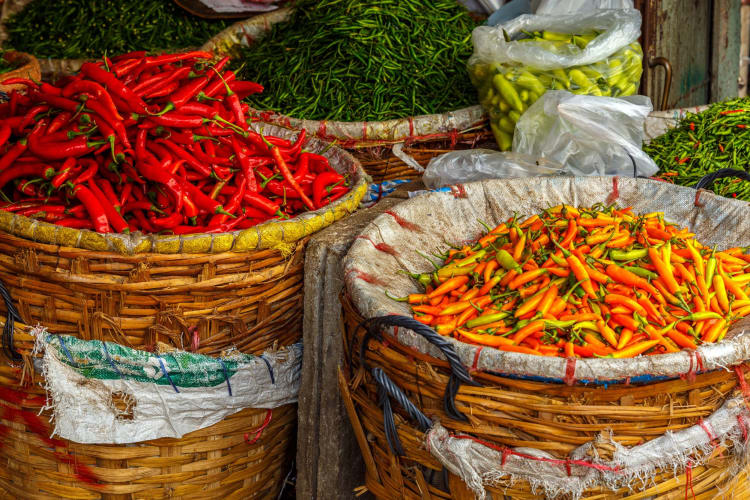
Naso di Cane
Translated as “dog’s nose,” this variety has a slightly more rounded, bulbous shape. It is also the largest and one of the mildest versions, but don’t let that fool you — these chiles still have plenty of heat to offer.
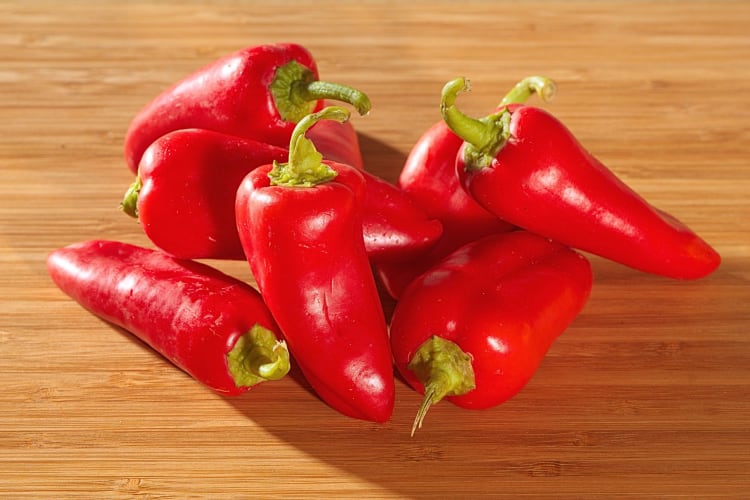
Sigaretta
Another common type is the sigaretta, which is quite skinny with a pointed end. In English, you might hear these called “cigarette” peppers because of their long, thin signature shape.

Peperoncini a Mazzetto
You may have seen photos of Calabrian chilis growing in bunches. The variety that grows this way is known as peperoncini a mazzetto, growing in clusters unlike other Calabrian chilis.
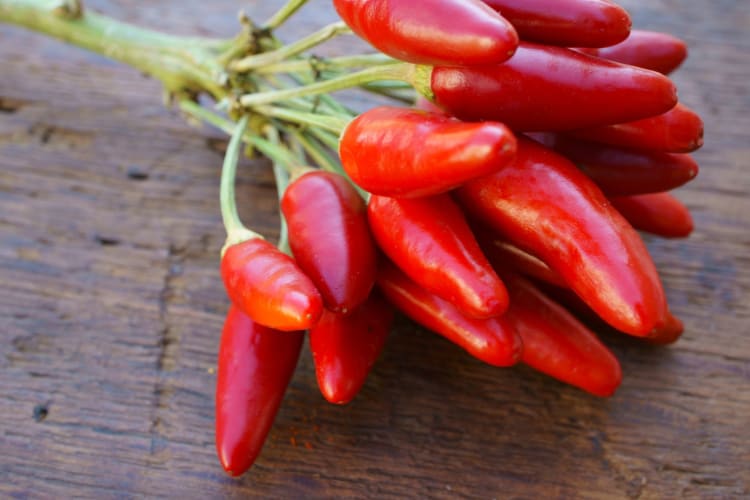
Diavolicchio
The smallest version is the diavolicchio, which translates to “little devil.” The name alone should give you an indication of what to expect from this pepper! This variety is the spiciest, so keep that in mind if you plan to use it in a recipe. This variety adds an extra kick of heat beyond the typical expectation for these chiles.
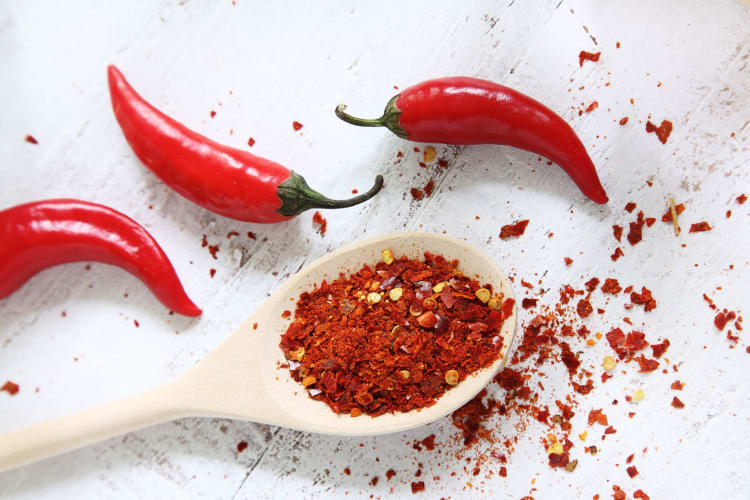
Casarella
Finally, the casarella, or cherry pepper, is the variety you will most often find in stuffed pepper recipes. Stuffing these peppers with different meats and fillings allows you to pair the flavor of the pepper with other savory elements.
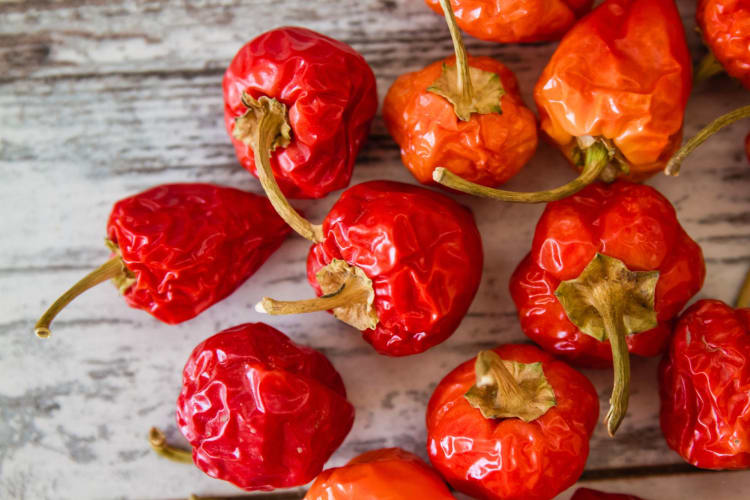
What Does Calabrian Chili Taste Like?
Traditionally, Calabrian chilis are left to age on the vine until they achieve the perfect flavor. These peppers are quite spicy and have a uniquely smoky flavor profile with a hint of fruitiness. One of the most interesting aspects of these peppers is that their complex flavors aren’t overwhelmed by their heat. This balance makes Calabrian chilis a useful ingredient for adding both flavor and spice to your dishes.
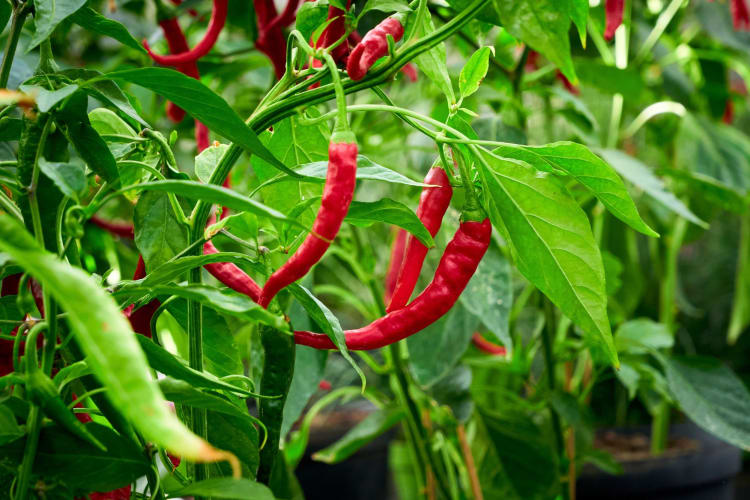
Is Calabrian Chili Spicy?
The heat of these peppers ranges from around 25,000 to 40,000 units on the Scoville Heat Scale. For reference, jalapeños range from around 4,000 to 8,500. As you can see from the difference in heat units, Calabrian chilis are significantly spicier than other peppers in the same species. Their signature spice makes them a great addition to Southern Italian cuisine.
It's important to keep the spice difference in mind when making substitutions. For those who are sensitive to heat, these peppers might be more than you bargained for. However, if you're looking to add heat to a dish, try using Calabrian chilis to elevate the flavor.
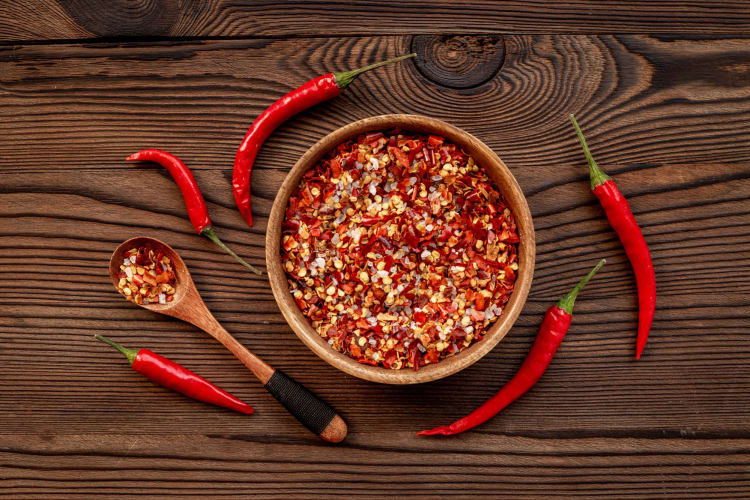
Are Calabrian Chili Peppers Good for Health?
Like other peppers, Calabrian chilis are rich in vitamins and minerals that support a healthy diet. They are high in vitamin C and contain key minerals like iron and magnesium. The heat you feel when eating spicy peppers comes from a chemical compound called capsaicin, which can have health benefits. Some studies have shown that consuming foods with higher levels of capsaicin can help improve digestive function.
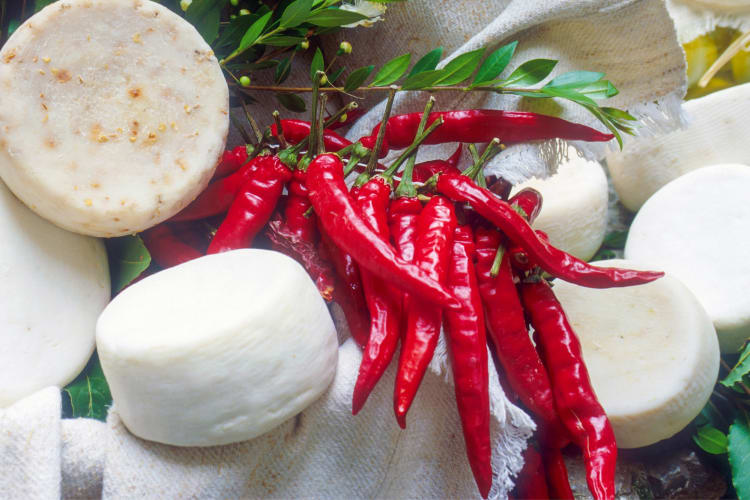
What Is Calabrian Chili Paste?
While you can certainly use and enjoy whole peppers, one of the most common ways to use Calabrian chilis is by creating a paste from the peppers and other spices. The resulting condiment is similar in texture to sambal and can be used on various dishes. Comprising Calabrian chilis, often with the addition of salt, oil and garlic, it's a wonderful addition to the pantry for spice lovers. It also makes a fantastic conversation piece at dinner parties as your guests attempt to handle the heat!

How To Make Calabrian Chili Paste
Making a paste from Calabrian chili peppers is quite easy. The quickest method is to blend chiles already packaged in a jar with oil in your food processor. Add more oil, such as olive or vegetable oil, along with a pinch of salt and garlic. Process the mixture until it forms a smooth paste, adjusting the amount of garlic or salt to taste. Once the paste is ready, you can use it on sandwiches, as a dip, or on vegetables before roasting. This paste is best used within a week of making, but you can also freeze it to keep it fresh for longer.
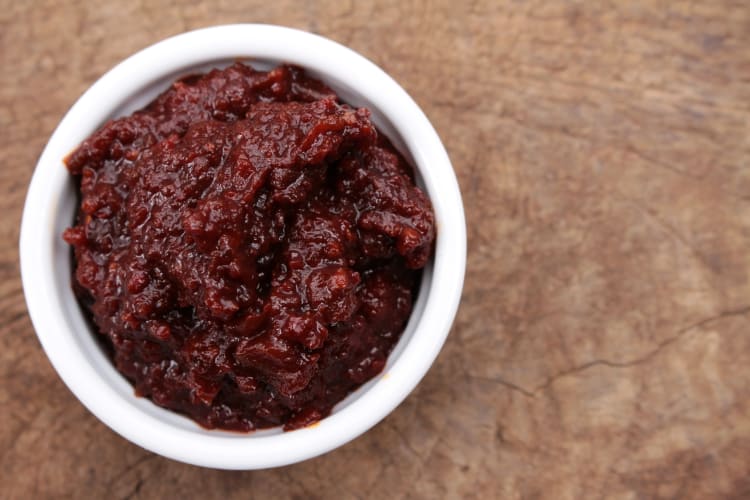
How To Cook With Calabrian Chilis
One of the most common uses for Calabrian chilis is in pasta dishes, like the famously spicy penne all’arrabbiata. The Italian word "arrabbiata" translates to “angry” in English, giving you a sense of how spicy the dish is meant to be. You can add these peppers to virtually any pasta dish to add extra heat. Try adding them to sausage carbonara or even to chicken Parmesan for an extra kick of flavor.
Of course, you don't have to limit your use of these delicious peppers to pasta; they're great for many other things, too. One common way to use the cherry pepper version is by stuffing and roasting them. You can also chop up any variety and use them as a relish for your next dinner. They're delicious as a topping for creamy cheeses and crackers or as a spread for an antipasto bruschetta. You could also add them to salads or sandwiches for a spicy surprise.
Another enjoyable way to enjoy Calabrian chilis is to eat them raw! The heat of the pepper serves as a great backdrop for smooth and subtle hummus. One surprising way they're often enjoyed is paired with a piece of chocolate. The combination of the spicy pepper with the sweetness of the chocolate is a delight to the taste buds.
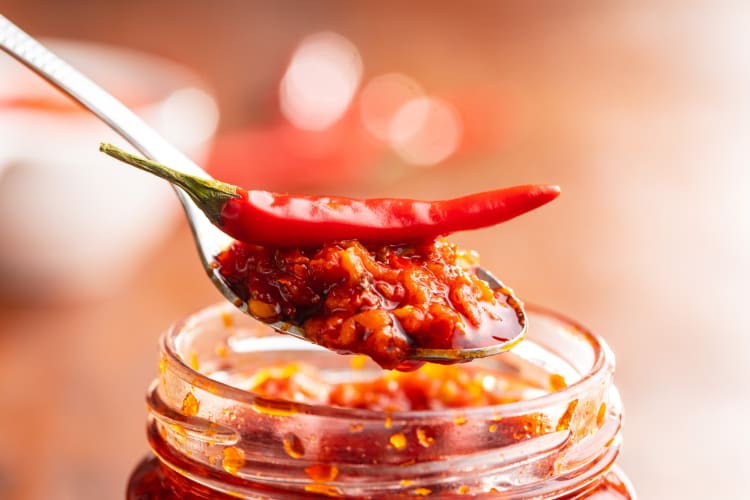
How To Store Calabrian Chili Peppers
If you've purchased whole peppers at the grocery store, it's best to keep them in the refrigerator until you need to use them. The recommended timeframe for consuming whole peppers like this is within three weeks after purchase. If you can't use them within that time frame, you can also dry them or use a dehydrator to preserve them for longer. Another option is to purchase jarred chiles. They're often stored in oil and can be kept for much longer than whole, fresh peppers.

How To Make Calabrian Chili Oil
If you are a fan of infused oils, you can trade out Thai chiles for the Calabrian version in this chili oil recipe. Customize the recipe to your taste by adjusting the levels of garlic and chile. Heat an oil of your choice; typically, a neutral oil like olive or avocado works well for this. Once you've minced and combined your spices, all that's required is to heat olive oil and add the dry ingredients and peppers while it simmers. You can store your homemade infused oil for about two months without refrigeration. The benefit of making chile pastes and oils at home like this is that you can keep them on-hand for future recipes and adjust the recipe to your specific tastes.
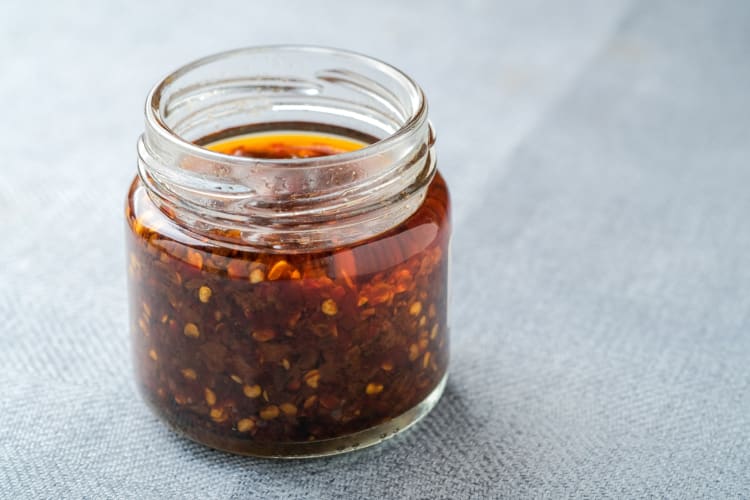
What Are Some Good Calabrian Chili Substitutes?
If you can't find Calabrian chilis in your local store, don’t worry! There are good substitutes available. Many peppers with similar heat and flavor will suffice. Next time you run out of these Italian peppers, try substituting more easily located types like jalapeños, habaneros or even serrano peppers.
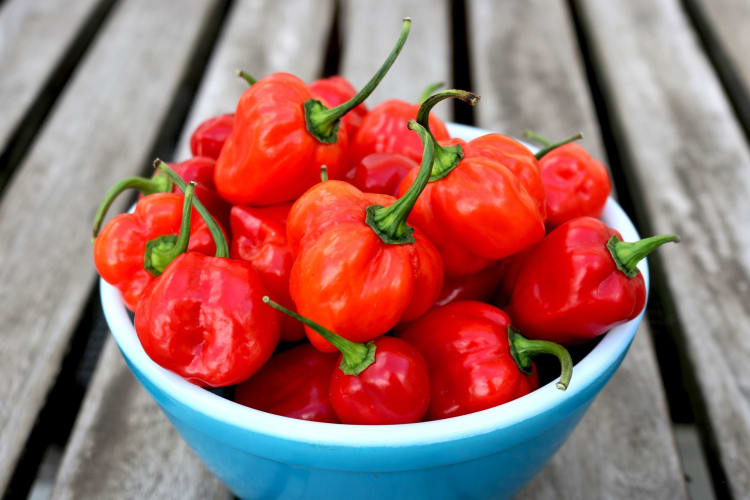
What Is a Good Calabrian Chili Paste Substitute?
If you find yourself out of Calabrian chili paste for your next dinner, there are some substitutes you can use. One of the best and closest substitutes is harissa, which is also a chile paste. Originating from North Africa, harissa contains garlic, spices and roasted red peppers, offering a very similar flavor and heat profile to Calabrian chili paste.
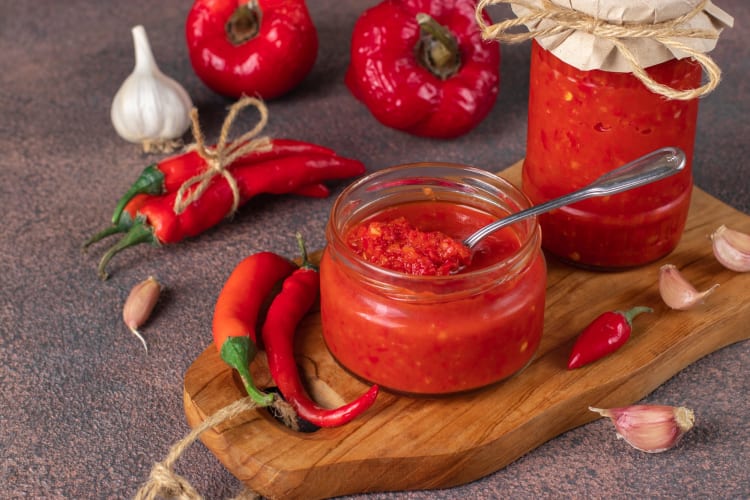
Where To Buy Calabrian Chilis
Finding and purchasing whole or raw Calabrian chilis might be slightly difficult, but it's certainly not impossible. Try your local grocery store or farmers market for the whole version, or consider purchasing them from an online retailer. You can also find the peppers in oil at most local grocery stores. This is a great option if you want to include the peppers directly into your recipe, as they are ready to use right out of the jar. Additionally, buying the peppers already jarred means they will keep on your pantry shelf for much longer.
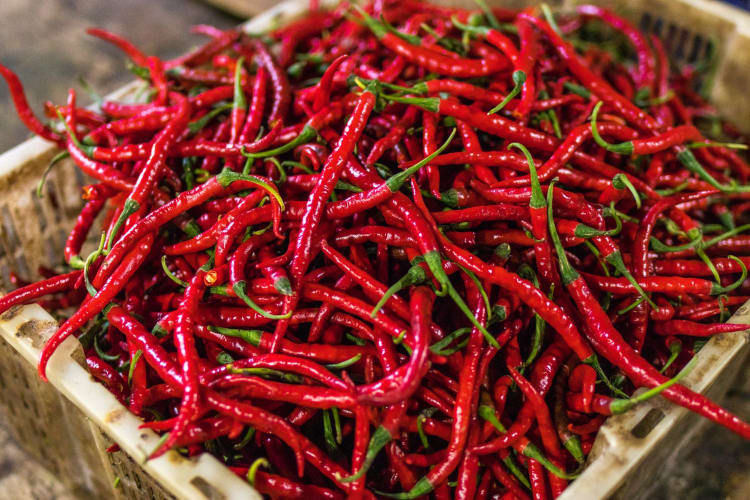
Where To Buy Calabrian Chili Paste
While it's quite simple to make your own paste from these Southern Italian peppers, you can also find pre-made pastes easily. You'll likely find several versions of this paste at your local grocery store. If not, specialty grocers like Whole Foods or World Market should have jars available on their shelves.
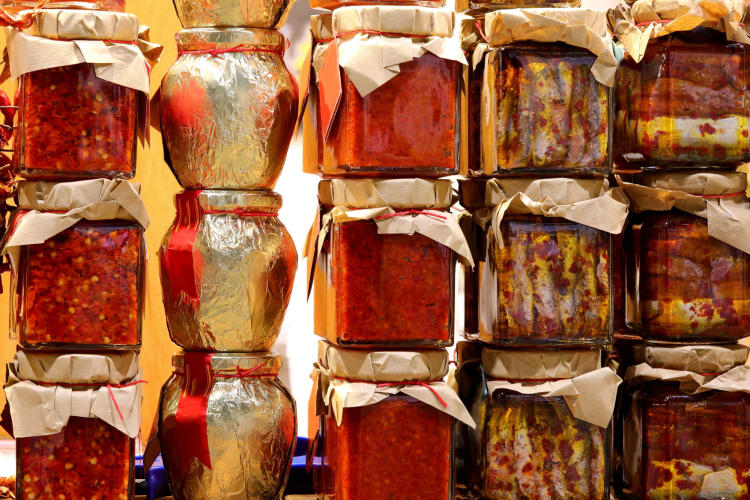
We trust this comprehensive guide to the Calabrian chili has inspired you to infuse some extra spice into your life. These peppers from Southern Italy are a great addition to your pasta dishes or your snack routines and they can certainly add a little bit of heat to whatever recipe you are hoping to make next. They're also incredibly versatile, opening spice-lovers up to a world of specialty oils and pastes with which to line their pantries, so if you're something of a gourmand and have been looking to try something new in your kitchen, what are you waiting for?
For even more ways to explore your favorite foods, check out other experiences happening on Cozymeal.
